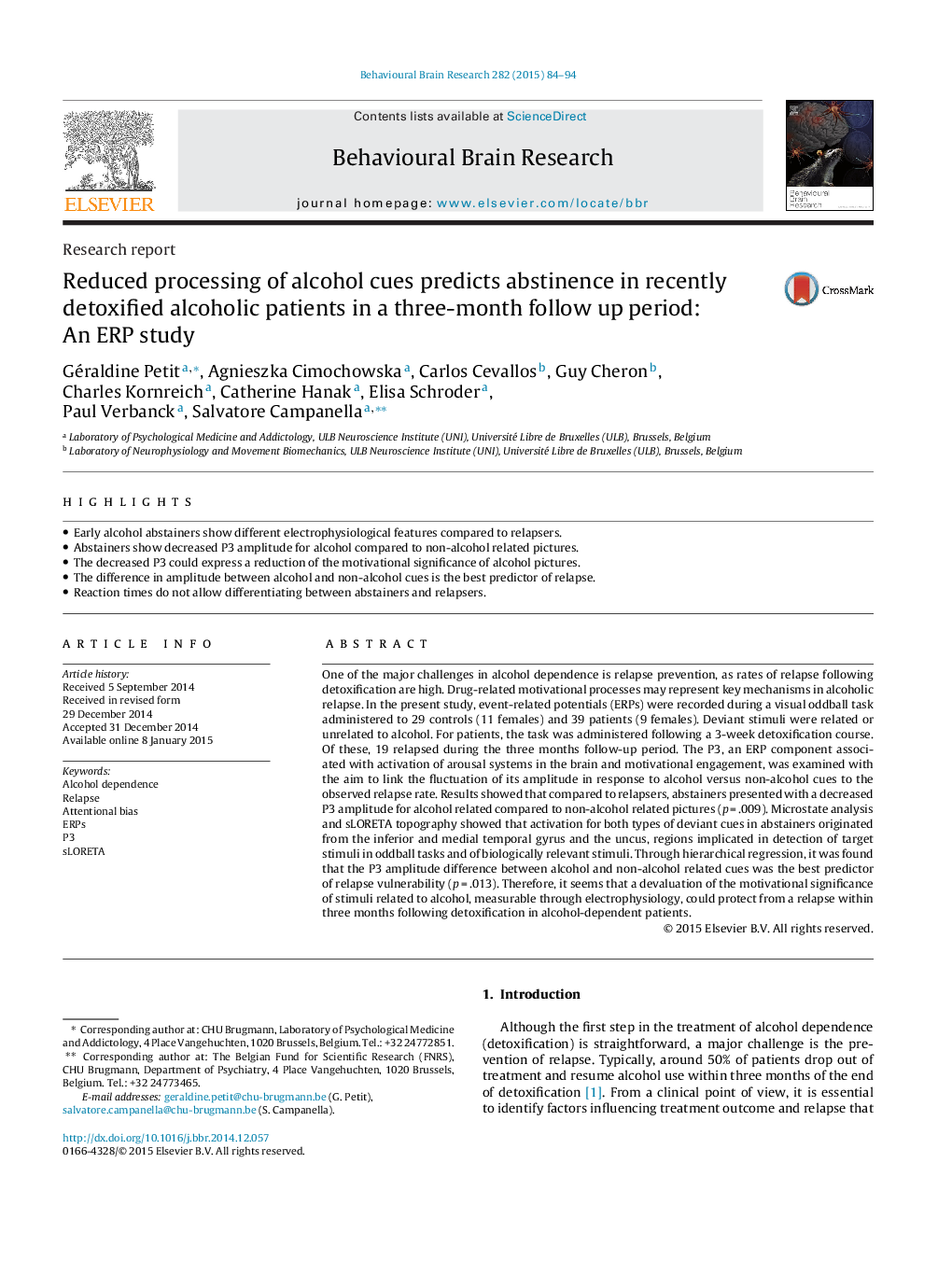| کد مقاله | کد نشریه | سال انتشار | مقاله انگلیسی | نسخه تمام متن |
|---|---|---|---|---|
| 6257264 | 1612950 | 2015 | 11 صفحه PDF | دانلود رایگان |

- Early alcohol abstainers show different electrophysiological features compared to relapsers.
- Abstainers show decreased P3 amplitude for alcohol compared to non-alcohol related pictures.
- The decreased P3 could express a reduction of the motivational significance of alcohol pictures.
- The difference in amplitude between alcohol and non-alcohol cues is the best predictor of relapse.
- Reaction times do not allow differentiating between abstainers and relapsers.
One of the major challenges in alcohol dependence is relapse prevention, as rates of relapse following detoxification are high. Drug-related motivational processes may represent key mechanisms in alcoholic relapse. In the present study, event-related potentials (ERPs) were recorded during a visual oddball task administered to 29 controls (11 females) and 39 patients (9 females). Deviant stimuli were related or unrelated to alcohol. For patients, the task was administered following a 3-week detoxification course. Of these, 19 relapsed during the three months follow-up period. The P3, an ERP component associated with activation of arousal systems in the brain and motivational engagement, was examined with the aim to link the fluctuation of its amplitude in response to alcohol versus non-alcohol cues to the observed relapse rate. Results showed that compared to relapsers, abstainers presented with a decreased P3 amplitude for alcohol related compared to non-alcohol related pictures (p = .009). Microstate analysis and sLORETA topography showed that activation for both types of deviant cues in abstainers originated from the inferior and medial temporal gyrus and the uncus, regions implicated in detection of target stimuli in oddball tasks and of biologically relevant stimuli. Through hierarchical regression, it was found that the P3 amplitude difference between alcohol and non-alcohol related cues was the best predictor of relapse vulnerability (p = .013). Therefore, it seems that a devaluation of the motivational significance of stimuli related to alcohol, measurable through electrophysiology, could protect from a relapse within three months following detoxification in alcohol-dependent patients.
Journal: Behavioural Brain Research - Volume 282, 1 April 2015, Pages 84-94